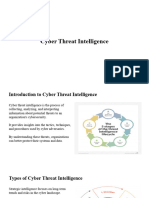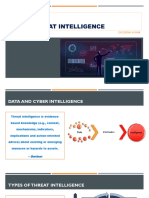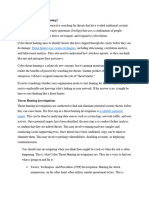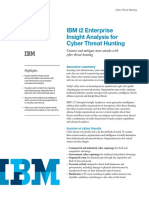0% found this document useful (0 votes)
6 views3 pagesThreat Hunting Assignment Final
The document provides an overview of Cyber Threat Intelligence (CTI), highlighting its importance in modern cybersecurity, types of threat intelligence, and primary sources. It also introduces the MITRE ATT&CK framework and discusses the tactics and techniques of the APT38 group, emphasizing the need for proactive security measures. The conclusion underscores the necessity of evolving CTI practices to effectively combat advanced threats.
Uploaded by
thundernk1Copyright
© © All Rights Reserved
We take content rights seriously. If you suspect this is your content, claim it here.
Available Formats
Download as DOCX, PDF, TXT or read online on Scribd
0% found this document useful (0 votes)
6 views3 pagesThreat Hunting Assignment Final
The document provides an overview of Cyber Threat Intelligence (CTI), highlighting its importance in modern cybersecurity, types of threat intelligence, and primary sources. It also introduces the MITRE ATT&CK framework and discusses the tactics and techniques of the APT38 group, emphasizing the need for proactive security measures. The conclusion underscores the necessity of evolving CTI practices to effectively combat advanced threats.
Uploaded by
thundernk1Copyright
© © All Rights Reserved
We take content rights seriously. If you suspect this is your content, claim it here.
Available Formats
Download as DOCX, PDF, TXT or read online on Scribd
/ 3






















































































